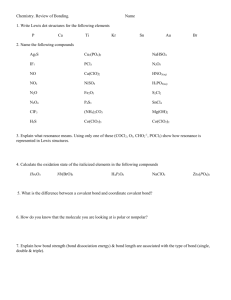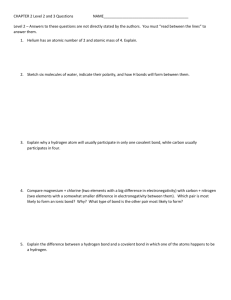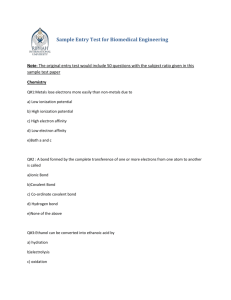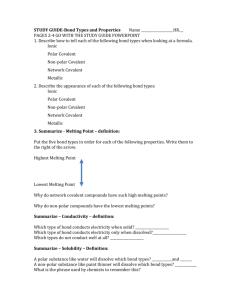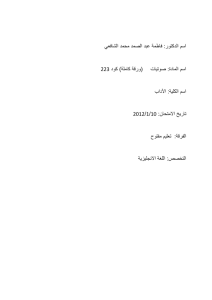Lesson 2 - Learning to learn
advertisement
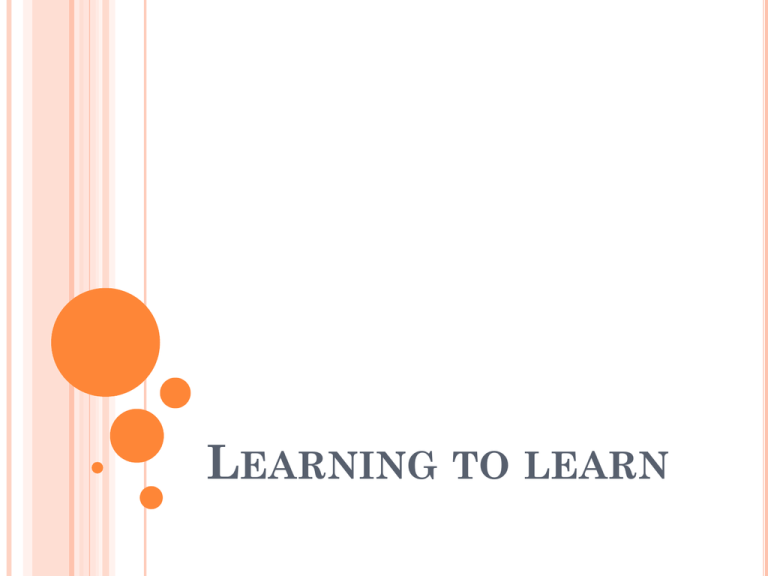
LEARNING TO LEARN AIMS: To learn how to use a dictionary (phonetic symbols and multiple meanings) To learn how to organize vocabulary To learn parts of speech WHEN YOU USE A DICTIONARY, IT’S VERY IMPORTANT TO KNOW HOW TO READ THE TRANSCRIPTION. HERE ARE SOME PHONETIC SYMBOLS WHICH USUALLY CAUSE PROBLEMS TO STUDENTS. Vowel sounds: /sʌn/ sun /ka: / car /bed/ bed /kæt/ cat /sıt/ sit /tri:/ tree /hɒt/ hot /hɔ:s/ horse /fʊl/ full /mu:n/ moon /wɔ:tə/ water /gɜ:l/ girl /leıt/ late /taım/ time /bɒı/ boy /həʊm/ home /aʊt/ out /hɪə/ here /ðeə/ there Consonant sounds: /ʧeə/ chair /eɪʤ/ age /θıηk/ think /ðıs/this /∫op/ shop / pleʒə/ pleasure IT’S ALSO VERY IMPORTANT TO KNOW THAT ONE WORD CAN HAVE MORE THAN ONE MEANING. table n. /teıbl/ 1. a kitchen table 2. the periodic table 3. the multiplication table key n. /ki:/= I’ve lost my keys, and now I can’t get in. keyadj. /ki:/ = very important He’s our key witness. lead /li:d/ = guide, show the way lead n. / led/ = Pb v. HOW TO ORGANIZE NEW WORDS IN YOUR NOTEBOOK It’s a good idea to write what part of speech it is and to write a sentence which shows how it is used. For example: bond n /bond/ = a force that joins something together Chemical bonds can be covalent or ionic. “My name is Bond, Chemical Bond.” The trade agreement strengthened the bonds between the two countries. PARTS OF SPEECH n. adj. pron. v. adv. prep. art. noun adjective pronoun verb adverb preposition article I have a sister. They live in an old house. They live in an old house. They live in an old house. He drives fast. They live in an old house. They live in an old house. LOOK AT THE TRANSCRIPTION OF SOME COMMONLY MISPRONOUNCED WORDS AND TRY TO WORK OUT WHAT THE WORDS ARE. /’æsɪd/ /beɪs/ /baɪka:bənɪt/ /baɪ’ɒləʤi/ /kælsɪəm/ /kəʊveɪlənt/ /daɪ’oksaid/ /kemɪst/ /’klɔ:ri:n/ /ɪks’perimənt/ /ʤel/ /hi:lɪəm/ /haɪdrəʤən/ /aiən/ /’mɒlikju:l/ /’ni:ɒn/ /’ɒksaid/ /zɪŋk/ THIS IS HOW WE SPELL THE WORDS acid base bicarbonate biology calcium covalent dioxide chemist chlorine experiment gel helium hydrogen ion molecule neon oxide zinc WORK OUT THE PARTS OF SPEECH OF THE UNDERLINED WORDS. TRY TO GUESS THE MEANINGS OF THE WORDS FROM THE CONTEXT. Emma left home, rounded the corner on her bike and saw a round metal object on the road. It went round and round in circles making a strange noise. Suddenly, a man came and fired a round of ammunition at the object. rounded the corner = verb a round metal object = adjective It went round and round = adverb a round of ammunition = noun IN PAIRS, USE THE WORDS BELOW TO WRITE AS MANY SENTENCES AS POSSIBLE IN FIVE MINUTES. crocodile was watching Mary is bigger animals left lot will zoo study home the and goes took to has a of yesterday tomorrow if if than gone WITCH OF THESE STRUCTURES DID YOU USE? Present Simple Present Continuous Future forms Present Perfect Past Simple Past Continuous Conditionals Comparison of adjectives Quantity expressions Modals of obligation The Passive ARE THESE STATEMENTS TRUE OR FALSE 1. 2. 3. 4. The number of letters in English is the same as the number of sounds. The best way to learn new words is to write example sentences. There are five parts of speech in English. What are the two different ways to pronounce the word LEAD? What’s the difference in meaning?


